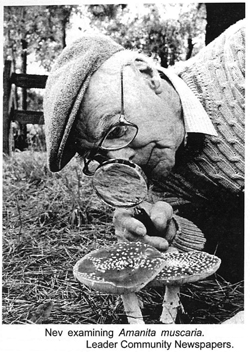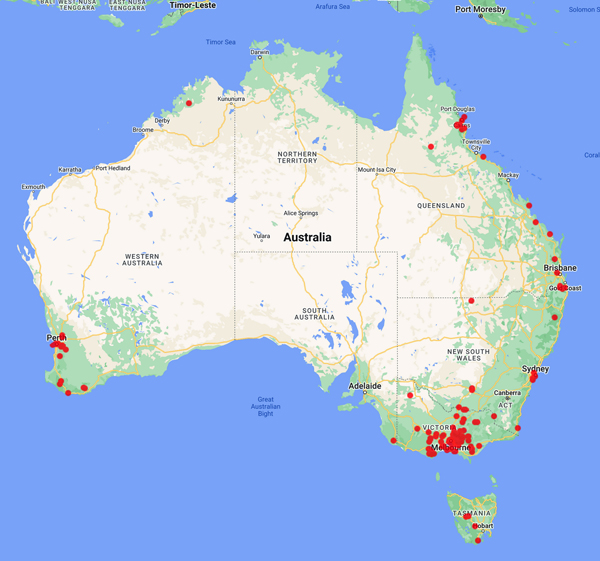
Council of Heads of Australasian Herbaria
Australian National Herbarium
Biographical Notes
 |
Council of Heads of Australasian Herbaria |
 Walters, Neville Emlyn Morris (Nev) (1916 - 2004)
Walters, Neville Emlyn Morris (Nev) (1916 - 2004)Born on 2 March 1916 (possibly Derbyshire/Leicestershire, UK); died on 13 April 2004, in Melbourne (aged 88)
Despite completing a law course and articling for
five years, Nev's heart was not in that type of work.
So he resigned and found a job teaching English to
adults in Germany. There he became interested in fungi. This was in 1938.
He escaped Germany after the borders were sealed
in 1939 and served in the British Army.
After escaping by ship as Singapore was falling to
the Japanese Army, he was taken to Australia.
During three weeks shore leave in Melbourne he met
his future wife, Jean.
The war kept them apart until
1946 when he returned to Jean and enrolled for a
science degree in botany at the University of
Melbourne.
After graduating in 1950 and being hired by CSIRO,
he returned to England to work for one year at the
Royal Botanic Gardens, Kew and the
Commonwealth Mycological Institute.
Upon his return to Melbourne, he began his work
with CSIRO Division of Forest Products in the field
of timber preservation research.
He started with a
tiny number of culture collections and eventually
established a collection of fungal specimens which
was described, by Roy Wattling of the Edinburgh
Botanic Gardens, as an internationally significant
collection of wood inhabiting and wood destroying
fungi.
The fungal herbarium and culture collections
were a labour of love for Nev who was allocated a
maximum of 20% of his time to deal with these
collections.
For many years, the herbarium
collection (about 5,000 specimens representing 832
named species in 204 genera) was stored in cabinets
over DFP offices in a space Nev referred to as his
'mycelium' (a play on 'my ceiling'). The culture
collection of some 2,100 cultures was one of the
largest most diverse collections of wood-inhabiting
fungi in the world.
When, in 1999, changes at
CSIRO threatened the long-term viability of the
collections, Gary Johnson (Forest & Wood Products Research & Development
Corp.) ensured that the majority of the
herbarium material would be protected by expediting
its transfer to the Royal Botanic Gardens Melbourne.
The culture collection was transferred to Ensis
(a joint venture between CSIRO Forestry and Forest
Products and Forest Research Australasia Ltd).
Nev retired from CSIRO in 1977.
For the next 25
years he dedicated himself to his expanding family
and to local schools as a Christian religious
education teacher.
Each year his local newspaper would advertise field
walks to be conducted by Nev around Blackburn
Lake Reserve in Melbourne.
He published:
Marks, G.C.; Fuhrer, B.A.; and Walters, N.E.M., 'Tree Diseases in Victoria' Forests Commission, Victoria, (1982)
Walters, N. E. M., 'Australian house fungi' CSIRO Division of Building Research, (1973)
Source: Extracted from:
Gary Johnson, 'Vale Nev Walters', Australasian Mycologist 24, 29-46
The Ryerson Index
www.freebmd.org.uk/cgi/information.pl?cite=6XXFPVpdR3GloG6Jm5o0VQ&scan=1
Portrait Photo: 1980s, Leader Community Newspapers
Data from 1,249 specimens
